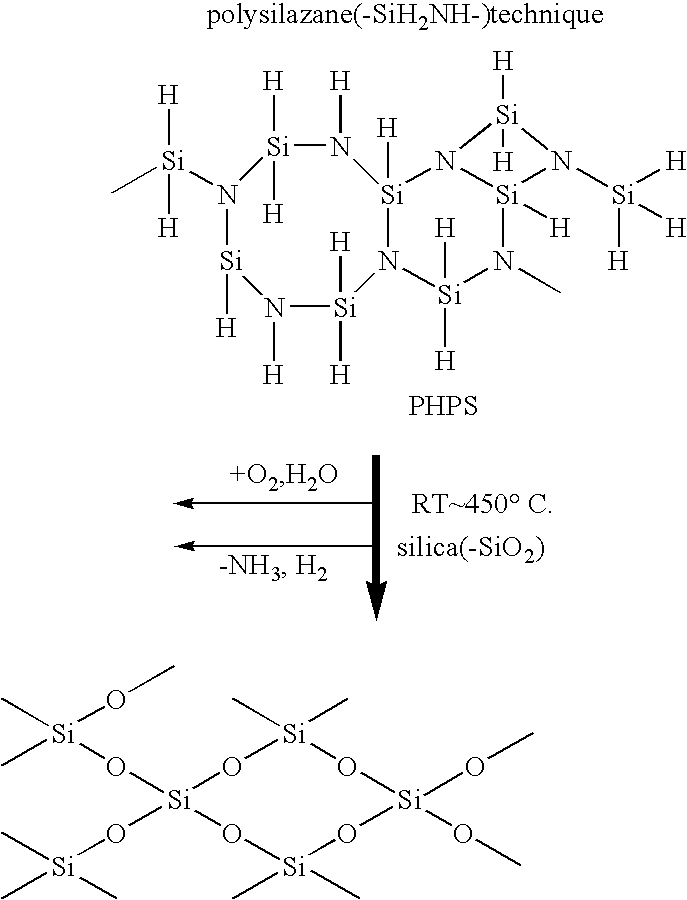Light emitting device
a technology of light-emitting devices and light-emitting layers, which is applied in the direction of thermoelectric devices, electroluminescent light sources, electric lighting sources, etc., can solve the problems of inhibiting current flow, difficult to form fluorescence conversion layers and/or color filter layers on organic el structures in desired patterns, and degrading electrode materials and thin films such as el films
- Summary
- Abstract
- Description
- Claims
- Application Information
AI Technical Summary
Problems solved by technology
Method used
Image
Examples
example 1-1
A polyether sulfone resin sheet of 200 .mu.m thick, which is colorless, transparent as demonstrated by an overall light transmittance of at least 90% and heat resistant as demonstrated by a Tg of 230.degree. C. (FS-5300 by Sumitomo Bakelite Co., Ltd.) was used as a base material 1 as shown in FIG. 1. This substrate 1 on both surfaces was coated with a 20 wt % dibutyl ether (DBE) solution of partially methyl-modified polysilazane (10 at % of hydrogen in the structure being substituted) (L710 by Tonen Corp., Pd catalyst-containing product) by dip coating, and dried by heating. While supplying humid air (humidified by bubbling air into pure water) into a clean oven held at 200.degree. C., the coated substrate was subjected to steam oxidation by heating in the oven for 2 hours. The coated substrate was then heat treated in an air atmosphere at 230.degree. C. for one hour. There was obtained a flexible transparent substrate having a dense silica layer of about 1.2 .mu.m thick containing ...
example 1-2
A 7059 glass substrate (Corning Glass Works) as a base material, after cleaning, was immersed in a 0.3% aqueous solution of KBM603 (Shin-Etsu Silicone Co., Ltd.), washed with water, treated with a silane coupling agent, and baked at 220.degree. C. for one hour.
Then, a red Transer film (Fuji Photo Film Co., Ltd.) was laminated to the substrate at 130.degree. C., a pressure of 2 MPa and a rate of 1.4 m / min. Then the base film of the Transer film was stripped. After masking with a red mask, the film was entirely exposed to a ultrahigh pressure mercury lamp so as to give an integral dose of 50 to 100 mJ / cm.sup.2.
Next, red pixels were formed by a process using a selected developer and developing agent. Using the ultrahigh pressure mercury lamp, post-exposure was carried out from both the back surface of the glass substrate and the pixel-forming surface and to an exposure dose of 500 mJ / cm.sup.2. The glass substrate was further baked at 220.degree. C. for 120 minutes, obtaining a color fi...
example 1-3
An alumina substrate was used as a substrate 11 as shown in FIG. 2. On the substrate 11, an Al electrode 12 was formed to a thickness of 200 nm by an RF sputtering technique. Next, by an RF sputtering technique using a target containing SiO.sub.2, BaO, B.sub.2 O.sub.3, Al.sub.2 O.sub.3 and CaO in a weight ratio of 45:30:12:12:1 under conditions: input power 1.5 kW, O.sub.2 2% and 0.4 Pa, the material was deposited to a thickness of 100 nm. This was annealed at 220.degree. C. for 4 hours for crystallization, obtaining a lower insulating layer 13 in the form of a glass ceramic film.
On the lower insulating layer, a ZnS:Mn phosphor thin film (light emitting layer) 14 of 600 nm thick was formed at a substrate temperature of 200.degree. C. by an EB evaporation technique and annealed in vacuum at 600.degree. C. for 10 minutes. Then, a SrS:Ce phosphor thin film 14 of 600 nm thick was formed at a substrate temperature of 550.degree. C. by an RF magnetron sputtering technique using Ar gas and...
PUM
 Login to View More
Login to View More Abstract
Description
Claims
Application Information
 Login to View More
Login to View More - R&D
- Intellectual Property
- Life Sciences
- Materials
- Tech Scout
- Unparalleled Data Quality
- Higher Quality Content
- 60% Fewer Hallucinations
Browse by: Latest US Patents, China's latest patents, Technical Efficacy Thesaurus, Application Domain, Technology Topic, Popular Technical Reports.
© 2025 PatSnap. All rights reserved.Legal|Privacy policy|Modern Slavery Act Transparency Statement|Sitemap|About US| Contact US: help@patsnap.com



